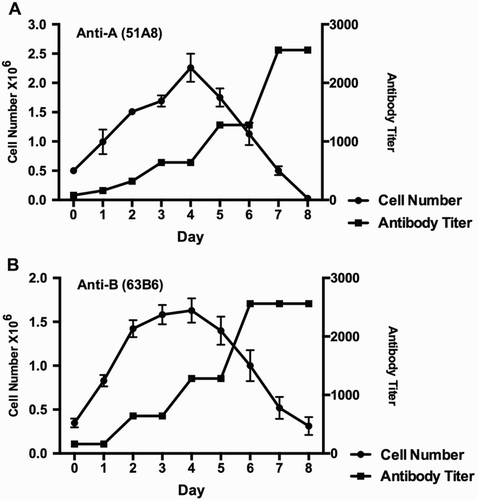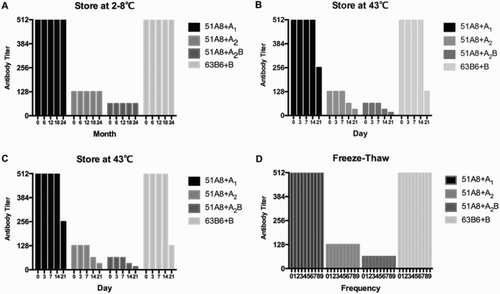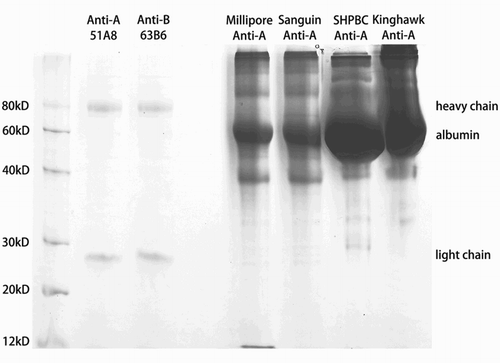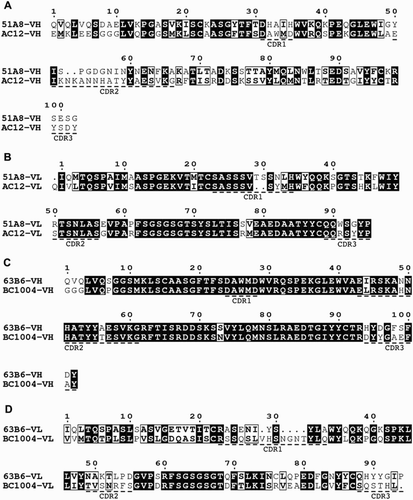Figures & data
Figure 1 Cell growth curve and antibody productivity. The counted cell number of clone 51A8 (A) and 68B6 (B) in 600 ml medium (indicated as solid circle) and measured anti-A (A) or anti-B (B) antibody titer (indicated as solid square) of the culture supernatants everyday were plotted. Bar represents standard deviation (SD) of three parallel samples.

Figure 2 Longitudinal and accelerated stability test of anti-A (51A8) and anti-B (63B6) reagents. A longitudinal test for 2 years at 2–8°C. (B) Accelerated test for 3 weeks at 37°C. (C) Accelerated test for 3 weeks at 43°C. (D) Freeze–thaw test between −70 and 37°C.

Figure 3 SDS–PAGE analysis of anti-A (51A8) and anti-B (63B6) reagents and other commercial anti-A reagents.

Table 1 Protein quantification of different antibody reagents
Table 2 Agglutination score of anti-A (51A8) and anti-B (63B6) reagents reacted with different RBCs phenotype
Table 3 Titer of anti-A and anti-B reagents from different manufacturers
Figure 4 Histograms of RBCs of ABO antigens tested with anti-A or anti-B antibody reagents and FITC-labeled secondary antibodies. The X and Y-axis represent FITC-derived fluorescence and the number of cells, respectively.

Figure 5 The comparison of amino acid sequences of the variable regions of anti-A (51A8) and anti-B (63B6) with that of other published counterpart.Citation17–Citation19 (A and B) VH and VL sequences of 51A8 are compared with those of AC12.Citation2 (C and D) VH and VL sequences of 63B6 are compared with those of BC1004.Citation20

